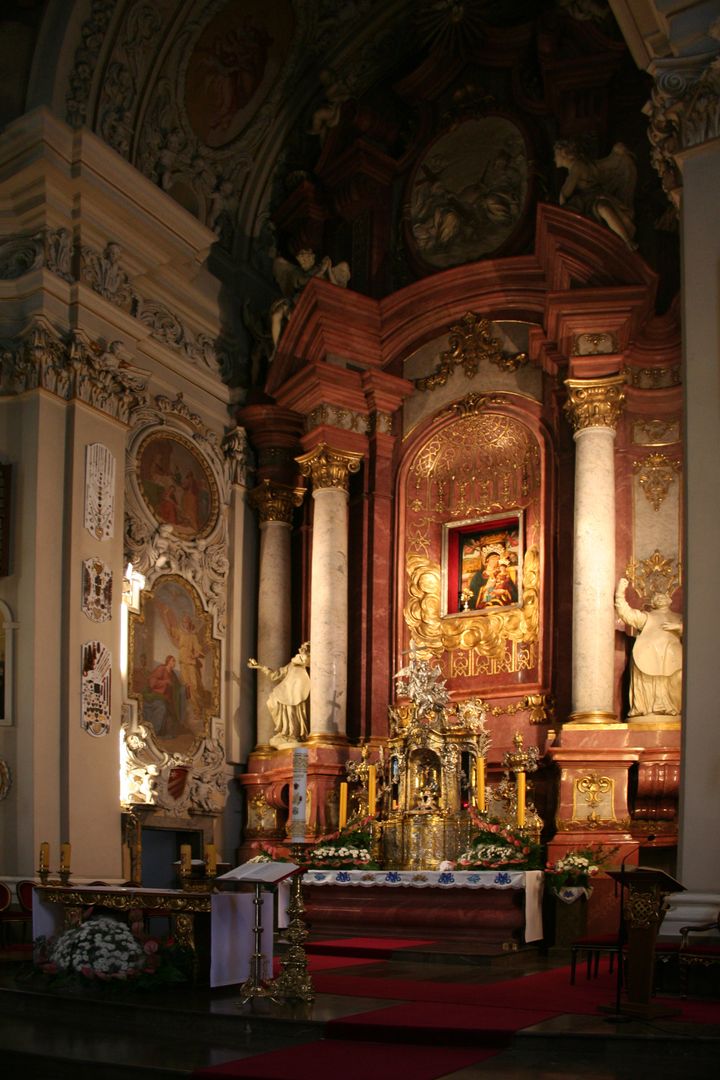Basilica on the Holy Mountain
6.14

Overview
The Pauline Monastery on Święta Góra, located in Głogówko near Gostyń, is a monastic complex featuring a Baroque church dedicated to the Immaculate Conception of the Blessed Virgin Mary and St. Philip Neri. Built between 1675 and 1698 and modeled after the Venetian basilica of Santa Maria della Salute, it stands on a moraine hill, regarded as a site of religious worship since the Middle Ages. The history of this place dates back to the 15th century when a wooden chapel was erected here, housing venerated figures of the Pietà and the Crucifix. In 1512, the Bishop of Poznań, Jan Lubrański, officially endorsed the development of Marian devotion, and a miraculous image of the Mother of God with the Child attracted numerous pilgrimages. A pivotal moment occurred in 1668 with the arrival of the Oratorians (Philippines), and the construction of the current church was intended as a votive offering for the miraculous healing of its founder, Adam Konarzewski. After his death, his widow, Zofia, continued the construction, drawing inspiration from Italian architecture. The church is distinguished by its circular layout, a dominant dome (the largest in Poland), and richly decorated interiors. The main altar, featuring the miraculous image, and the polychrome on the dome depicting scenes from the life of St. Philip Neri, are key decorative elements. The monastery hosts various retreats. In 1971, the church was granted the title of a minor basilica, and in 2008, it was designated a historic monument. The Association of Lovers of Święta Góra Music, active at the basilica, promotes works by composers associated with this place. Święta Góra, linked to many historical events, remains an important center of Marian devotion, attracting pilgrims and history enthusiasts alike.
Location
2025 Wizytor | All Rights Reserved